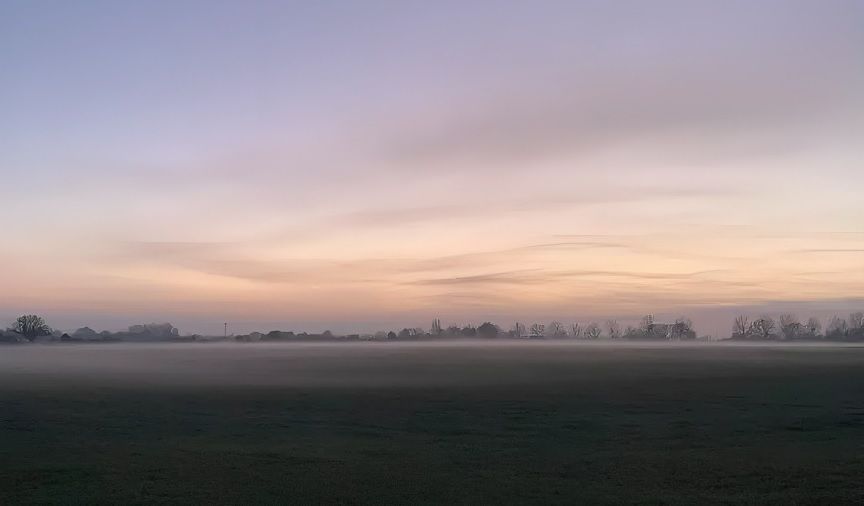
“
The mysteries of foggy weather open a window into a world where misty landscapes and hidden wonders captivate both young and old alike. From its formation to its impact on environments and creatures, fog is more than just a weather phenomenon—it's a fascinating part of nature that influences climates, inspires art, and plays a role in everyday life. Join us on a journey through educational facts about foggy weather, where we uncover its secrets and discover how it shapes our world in unexpected ways.1
1
”
Fog consists of tiny water droplets suspended in the air, creating a cloud-like effect near the ground. In each cubic meter of fog, there can be up to 0.5 milliliters of water. 1
At sea level, dense fog with visibility less than 900 meters (1000 yards) persists for weeks on the Grand Banks off the coast of Newfoundland, Canada. On average, these foggy conditions occur for more than 120 days each year. 2

Fog comes in several varieties, each with its unique characteristics. Radiation fog forms on clear nights when the ground cools rapidly, advection fog rolls in with warm, moist air from the sea, and upslope fog climbs up mountain slopes, spreading like an explorer eager to discover new heights.
Cities such as San Francisco, London, and Melbourne often feature prominently in foggy tales. The foggiest area in the United States is Point Reyes, California. It is in the top two foggiest land areas in the world with over 200 days of fog a year. 3
Birds actively avoid flying into fog. A radar study at the Strait of Messina (a bottleneck for migrating birds) found that fog was the most critical factor affecting bird migration intensity. They altered their flight paths to steer clear of foggy areas. 4
Scientists directly observed fog on Mars near the planet’s north pole using NASA’s Phoenix Mars Lander. Martian fog contains about 1.7 milligrams of water ice per cubic meter. Most of the fog consists of tiny particles smaller than a thousandth of an inch. 5
A fog bow, as its name implies, is a rainbow that emerges within fog rather than during rainfall. These ethereal phenomena are fainter and less distinct than traditional rainbows, yet they often form a complete circle. 6
Along coastal regions, fog plays a role in regulating the local climate. It cools the air and affects nearby land temperatures, helping to create and maintain unique ecosystems that thrive in the cool, misty environment it provides. 7
In 1952, London experienced a severe environmental event known as the “Great Smog.” This prolonged period of intense fog was caused by a combination of industrial pollution and specific weather conditions. 8
Grand Banks, in the Atlantic Ocean off Newfoundland, holds the title for the foggiest place. The collision of the cold Labrador Current and the warm Gulf Stream creates fog here for over 200 days annually. 9

Foggy conditions offer photographers a chance to create captivating and dreamy images. The soft, diffused light that fog provides enhances the visual appeal of scenes, turning mundane landscapes into magical portraits that captivate and intrigue viewers.
The Atacama Desert in Chile, one of the driest places globally, went 173 months without rain. Yet, it relies on frequent fog, known as ‘camanchaca,’ which creeps in from the coast. 10
Historically, sailors had to navigate through foggy seas with great skill and ingenuity. Fog presented significant challenges, leading to the development of advanced navigation tools and techniques that continue to guide mariners today. 11
Fog's moisture can impact health, especially in urban areas where it may mix with pollutants. This combination can affect respiratory health, prompting people to take precautions during foggy weather to avoid potential health issues. 12
Fog affects sound by muffling and absorbing it, creating a quieter environment. The fog's gentle embrace wraps sound waves, leading to a noticeable reduction in noise and contributing to the serene and peaceful atmosphere. 13
Meteorologists closely monitor fog patterns to make accurate weather forecasts. Using advanced technology and data analysis, they predict when and where fog will occur, aiding in better planning and preparation for foggy conditions. 14
Fogponics systems use ultrasonic foggers to create a fine mist of nutrient-rich water.This mist envelops plant roots, providing essential nutrients and oxygen. Unlike traditional hydroponics, where roots are submerged in water, fogponics deliver nutrients directly to the root zone via fog. 15
In arid regions, fog nets are used to capture moisture from fog, providing a valuable water source. This innovative method helps communities in dry areas collect essential water, turning fog into a crucial resource for survival.16
Despite its challenges, fog bestows a magical quality on landscapes, transforming everyday scenes into enchanting realms. Its misty veil invites us to view the world through a new, dreamlike perspective, blending reality with fantasy. 17


